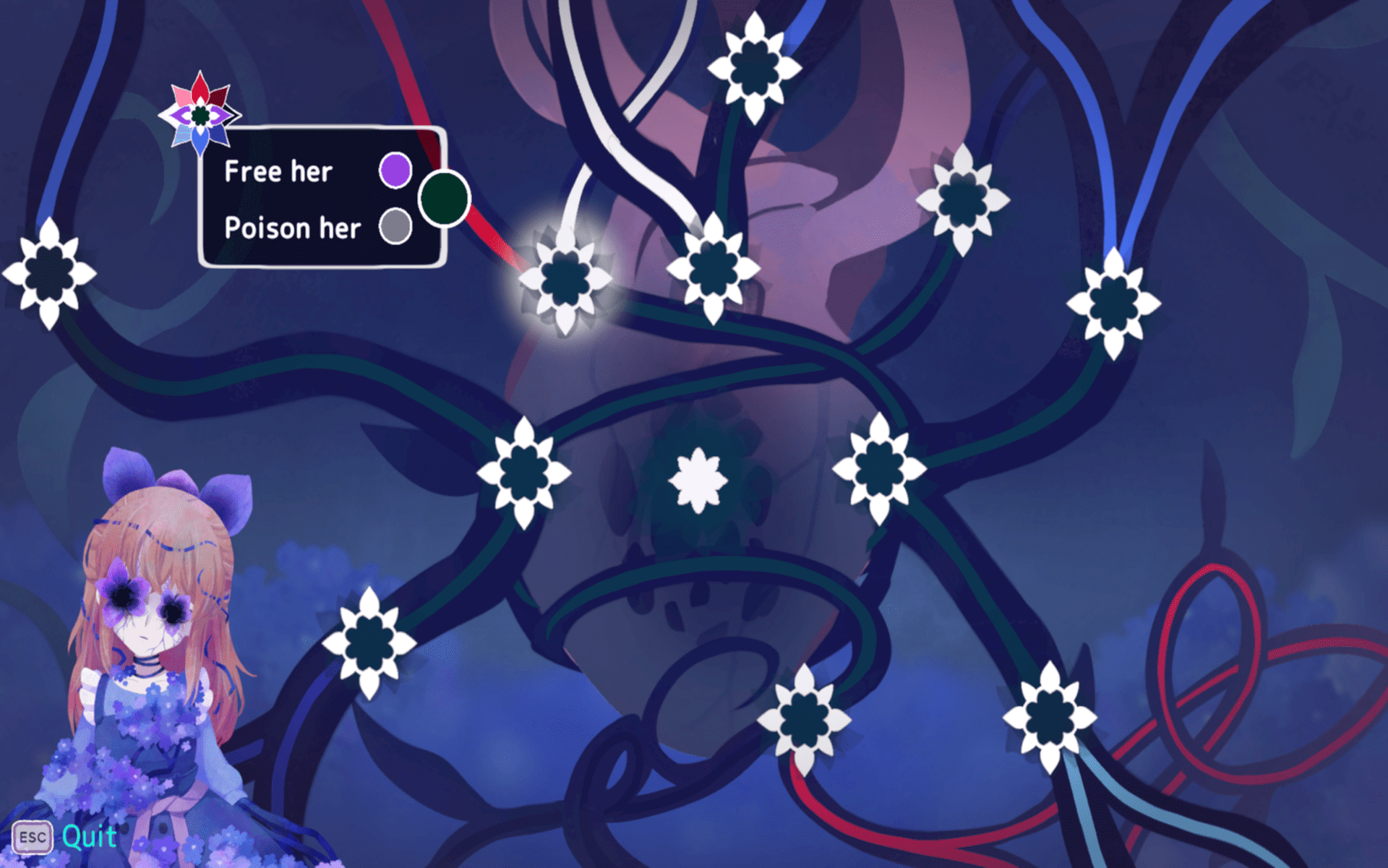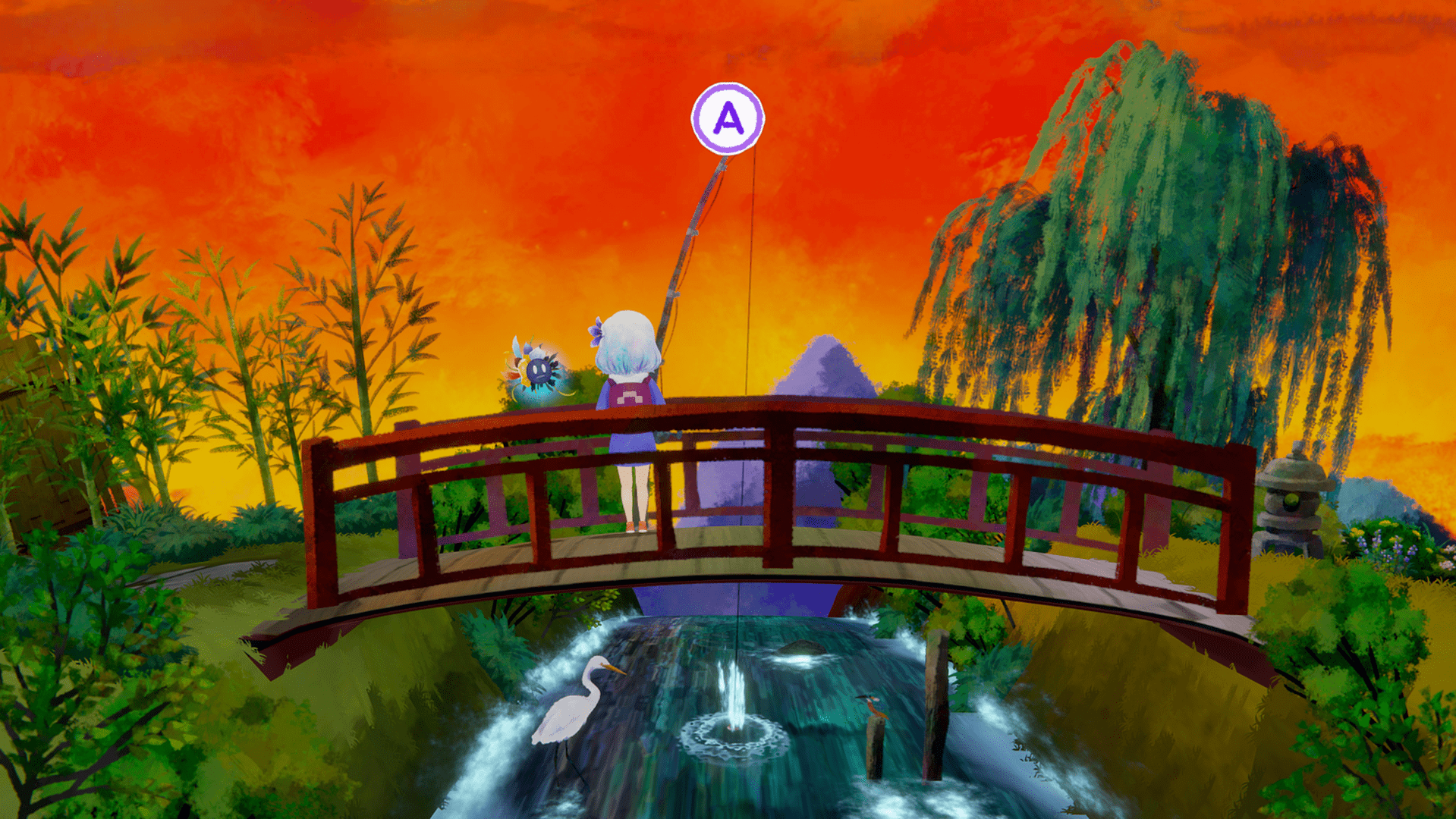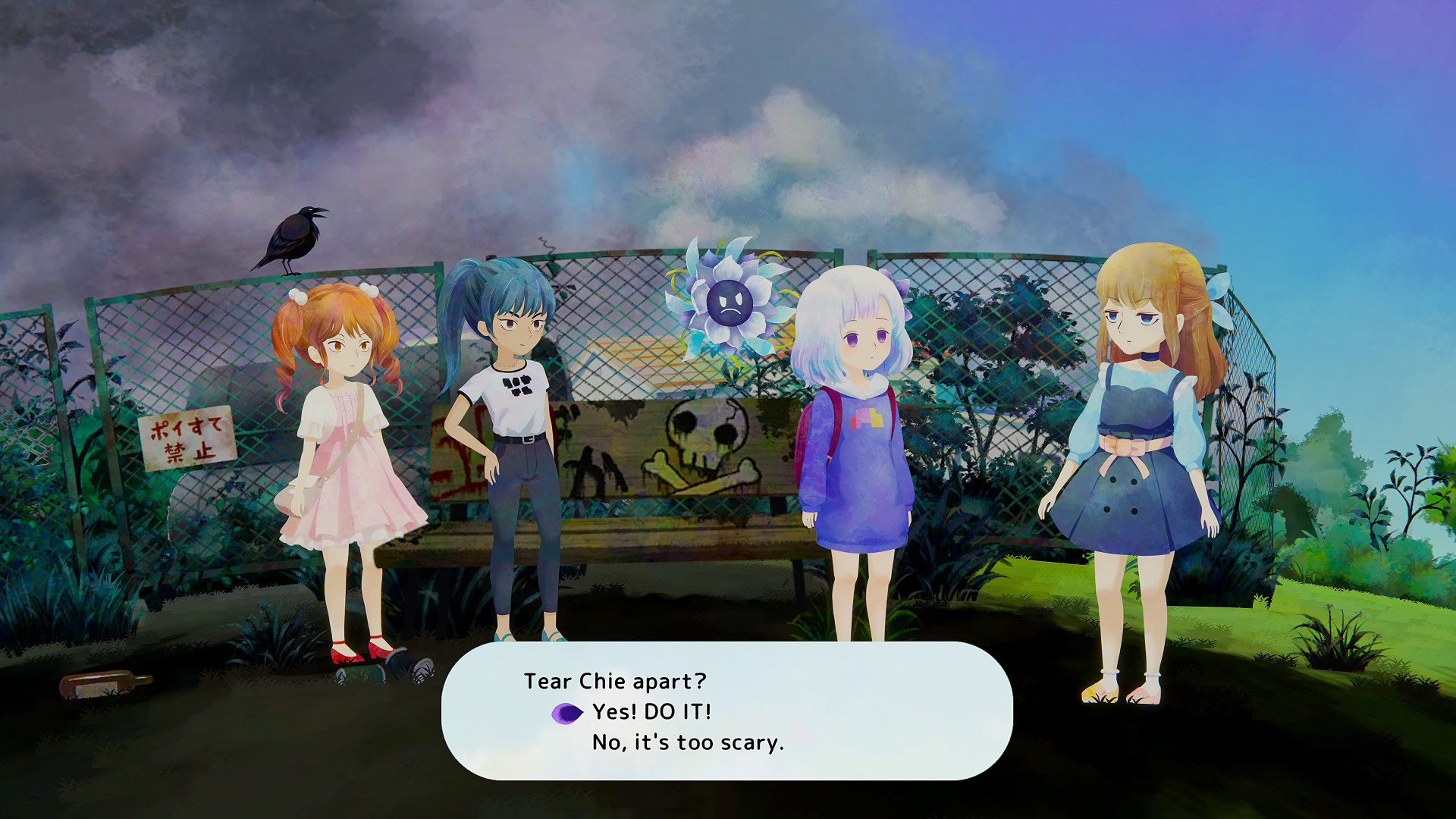
While concluding my first playthrough of Sumire, tears began to run down my face as I bore witness to a simple yet fantastically written story come to its subtle yet heart-warming end. I am not the type to get emotional while consuming most pieces of media; however, this game managed to strike a chord within me and resonate with many thoughts and issues I and many others face today.
One of the greatest features Sumire possesses is its decision to allow your own choices in certain scenarios to dictate how you play and experience the game. Throughout the story, the player is presented with multiple situations in which your choices drastically affect the outcome. While some of these scenarios are relatively minor, in combination with each other they are utilized to weigh what type of person you are, be it a kind soul or a being of hatred.
Unlike other games with these types of situations, Sumire allows you to pursue whichever course of action you decide with no handholding or forcing you into specific decisions outside of two situations. While there is some favoritism in one route over the other, they each portray the story in a way that cannot be done with just one side alone.
While this may sound enticing, in reality, this is nothing new to these types of games and many others. It also does not do much in terms of presentation to allow itself to stand out amongst similar games. So is Sumire truly worth all the time spent playing and multiple tears shed? Find out in our Sumire Review!
Sumire
Developer: GameTomo Team
Publisher: GameTomo Co., Ltd.
Platforms: Windows, Mac, iOS (Reviewed), Nintendo Switch
Release Date: May 26, 2021
Players: 1
Price: $9.99 USD

The first thing I must compliment about this game is its absolutely gorgeous art style. Its serene picture book-esque art style is greatly utilized to impact the overall mood of the story without making it feel at all out of place. At times it is used to provide a calm and soothing atmosphere while in other moments its dark colors provide a chilling sense of dread and despair. At no time does it feel as if the art was compromised or set aside to focus on another department as this beautiful style can be found and appreciated in every nook and cranny of the world.
While the art does bring it quite far, its potential is only truly unlocked when complimented by its spectacular soundtrack. TOW really outdid themselves in perfectly encapsulating each and every moment within the game perfectly allowing us to really put ourselves in the shoes of the protagonist and much more easily make choices in the game dependent on our own emotions.
The game begins by having us observe a dream had by the main character, Sumire. She reminisces on a moment she shared with her late grandmother and expresses her deep regret in being unable to understand the final message her grandmother tried to give her before she passed away. As she goes to pay respects to her grandmother’s alter, a mysterious object descends from the sky breaking into Sumire’s home. After collecting the object she is reminded of a story her grandmother once told her and believes the object to be a seed. She plants the seed in a nearby pot and promptly returns to sleep.

Upon waking up she is greeted by a sentient flower! The funky flower states it only has one day to live and wishes to spend it with Sumire having a “perfect day”. In return for this, it claims that it will use its power to allow Sumire to communicate with her grandmother again. Sumire agrees to assist the flower and with this, the duo set off on their adventure.
From this point onward, you are put into the world and allowed to do whatever you choose to reach the end goal of having a perfect day and reuniting with Sumire’s Grandmother. As previously mentioned, the game possesses two main routes: a high karma route and a low karma route. The endings are primarily decided by how you decide to tackle many of the game’s quests.
The high karma route is achieved by assisting most of the folks within the town by completing missions for them and refusing to perform any evil acts within the game. Because you need to go out of your way to complete tasks properly, in turn, provides more content and dialogue for the player to take in and view the world within.

However, when conducting the low karma route, a large portion of quests and dialogue must either be sacrificed or skipped entirely to obtain this ending. While there are some new bits of information to gain from participating in this route, it does feel quite shallow as most of the same dialogue is used during these conversations and only one of the many quests in the game was designed to be completed negatively.
Some missions have a way to earn low karma that involves the character waiting a certain amount of time to pass or choosing one option that cancels the quest and provided low karma. Compared to high karma which involves waiting and exploring the world, there is basically nothing that needs to be done to obtain low karma.
I would personally like to see this tweaked by either adding a few more low karma quest options or making it a bit more challenging to get low karma so it provides a bit more content. While this isn’t necessarily a deal-breaker, I feel such a change would go a long way for both enjoyability of the game and provide more opportunities for storytelling.
As we are thrust into the life of Sumire with little to no backstory, the game truly allows us to immerse ourselves in the world and provide us a chance to act however we see fit without being held by the chains of previous interactions. Throughout the story, we are given flashbacks showing how things in Sumire’s life were prior to encountering Flower.

They easily paint a story while at the same time not saying too much to allow for the player to formulate their own ideas and conclusions on how and why certain things had occurred. Sumire’s ability to allow this freedom in its storytelling yet still have this fantastic image painted at the end is truly remarkable and shows how carefuly the developers were to balance out the story to not be a one-way track or completely incomprehensible.
Seeing as Sumire is one of four other titles developed and released by GameTomo, I have high confidence in their abilities to create some truly beautiful and moving stories. I hope one day in the future they may consider making another story-based title as graceful and lovable as this one.
We did our Sumire review on iPhone with a digital code from GameTomo. You can find additional information about Niche Gamer’s review/ethics policy here. Sumire is available for Windows and Mac (via Steam), iOS, and Nintendo Switch